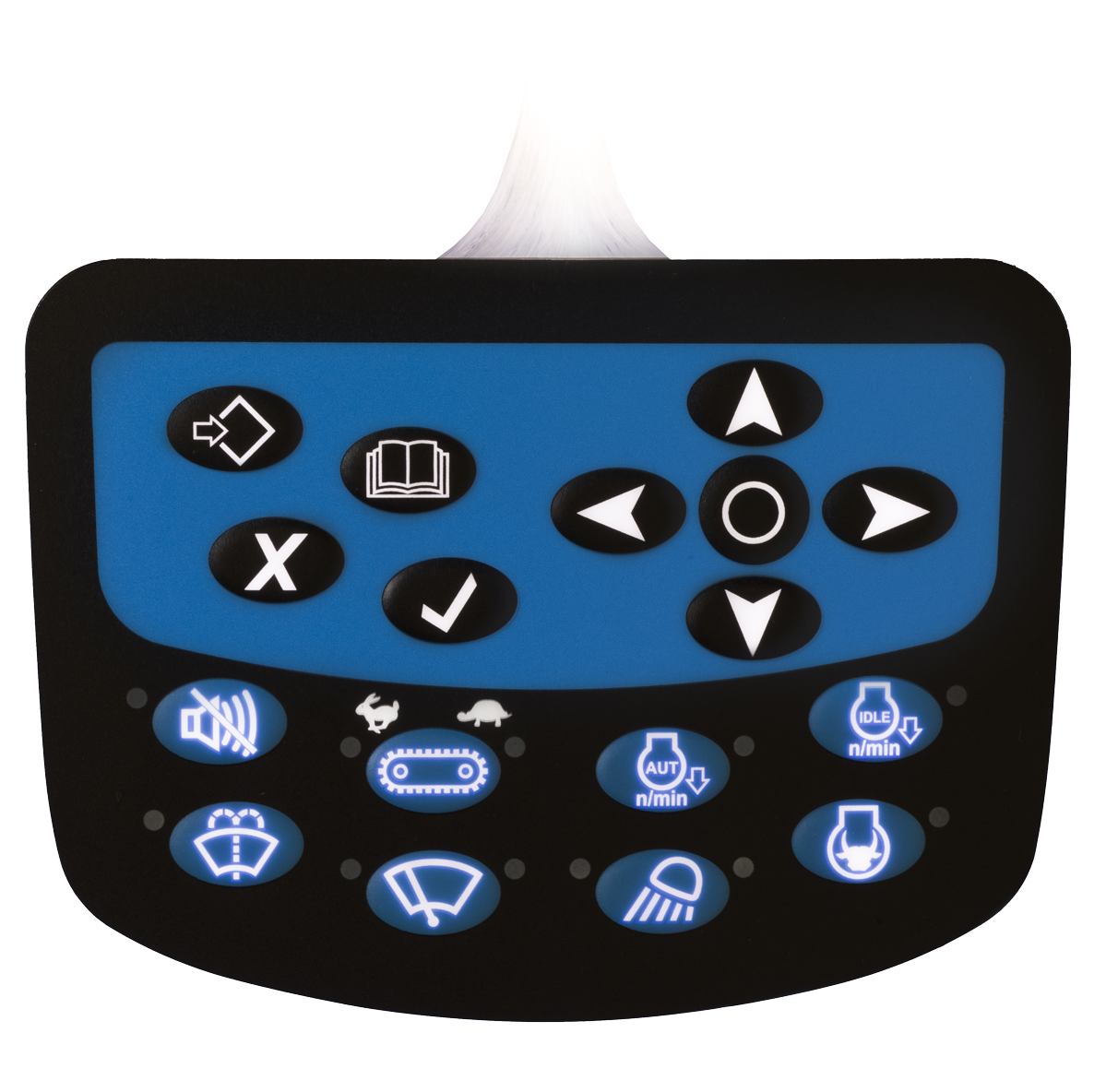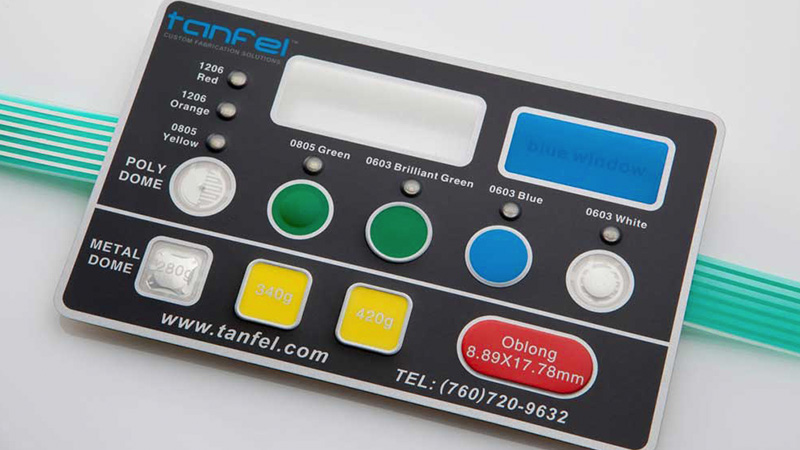The Reason Membrane Switches Are a Popular Choice for Healthcare Equipment
The Reason Membrane Switches Are a Popular Choice for Healthcare Equipment
Blog Article
Membrane Layer Switch Over Innovation: The Key to Reliable and Cost-Effective User Interfaces
Membrane layer button technology has actually emerged as a crucial element in the layout of interface, offering both integrity and cost-effectiveness across a varied range of applications. Its durable building guarantees resistance to ecological challenges, while the versatility in style enables tailored options that meet certain market demands. As we discover the diverse benefits of membrane layer switches, their potential for development increases concerns regarding future applications and advancing fads. What does the next chapter hold for this modern technology in a significantly electronic landscape?
Comprehending Membrane Layer Switch Over Modern Technology
Membrane button modern technology is an extensively utilized interface solution in various electronic tools, using a smooth mix of capability and design. This modern technology incorporates several layers of products, normally including a graphic overlay, spacer layer, and a circuit layer. The graphic overlay displays the user interface aspects, while the spacer layer separates the circuit layer from the overlay until a user turns on a switch.
When stress is applied to the overlay, the circuit layer completes the electric circuit, sending out a signal to the gadget. This system enables numerous setups, including tactile feedback and backlighting alternatives, enhancing customer communication. Membrane layer switches are typically made using resilient materials such as polyester or polycarbonate, ensuring longevity and resistance to ecological elements like dampness and dust.
The flexibility of membrane changes enables their application in varied industries, including clinical gadgets, customer electronics, and commercial controls. Their portable layout permits integration right into space-constrained settings, providing a reliable user interface without compromising visual allure. Recognizing the complexities of membrane button technology is essential for suppliers and developers looking for to produce trustworthy and efficient human-machine interfaces.
Secret Advantages of Membrane Switches
While numerous user interface remedies exist, membrane layer switches over deal distinctive advantages that make them a preferred option in countless applications. One of the primary advantages is their toughness; membrane layer buttons are developed to hold up against severe environmental problems, including moisture, dirt, and temperature level changes, making sure long-lasting performance. This strength dramatically reduces the requirement for constant replacements, thereby lowering total upkeep prices.

Moreover, membrane layer switches are lightweight and portable, making them suitable for applications where area is restricted. Their low-profile style contributes to a smooth appearance without endangering capability.
Cost-effectiveness is also a significant benefit, as the production procedure for membrane layer changes often tends to be less costly contrasted to typical mechanical buttons. This cost, incorporated with their reliability and simplicity of installment, placements membrane switches over as a useful service for a wide variety of industries looking for efficient and effective individual interfaces.
Applications Throughout Various Industries
Exactly how do membrane switches adjust to the diverse needs of different industries? Membrane switch technology is progressively recognized for its flexibility, making it suitable for a wide array of applications across several industries.
In customer electronic devices, membrane layer buttons supply a portable option for remote controls and home appliances, enhancing user experience with intuitive layout. Additionally, the commercial market leverages membrane buttons for equipment control panels, gaining from their resistance to harsh environments, such as moisture and dust.
Army and aerospace applications also use membrane layer switches for their dependability and capacity to hold up against severe conditions, guaranteeing operational efficiency in essential situations. Additionally, the food and drink industry takes on these buttons for automated systems, where cleanliness and convenience of procedure are extremely important. Inevitably, membrane switches are customized to satisfy the distinct needs of each market, verifying their crucial function in modern-day innovation interfaces
Layout and Modification Alternatives

In the world of membrane button innovation, style and customization options play an essential role in boosting capability and individual interaction. These switches can be tailored to satisfy specific functional requirements and visual preferences, making them functional components in numerous applications.
One of the main personalization choices is the format of the button itself, which can be designed to accommodate distinct user interfaces and ergonomic factors to consider. By changing the form, size, and setup of switches, makers can develop intuitive styles More hints that help with simplicity of usage. Furthermore, the consolidation of various colors and visuals overlays enables branding and enhanced exposure, making certain that customers can promptly identify functions.
Furthermore, membrane switches can be crafted with different tactile feedback systems, such as increased buttons or audible clicks, to improve the individual experience. Various products can likewise be chosen for longevity and environmental resistance, addressing factors such as moisture, temperature fluctuations, and chemical exposure.
Ultimately, the comprehensive design and personalization alternatives available in membrane switch innovation encourage businesses to produce customized options that not only meet useful demands but additionally line check my site up with their branding and functional needs.

Future Trends in Membrane Switches
As membrane layer switch modern technology proceeds to advance, future patterns are significantly concentrated on enhancing individual experience and integrating innovative performances. One substantial fad is the assimilation of touch-sensitive and capacitive modern technologies right into traditional membrane layer buttons. This advancement allows for even more user-friendly customer interfaces, supplying tactile feedback while preserving a smooth style.
Another arising trend is making use of eco-friendly products, driven by the growing need for sustainable manufacturing methods. Manufacturers are seeking to minimize their carbon impact by making use of recyclable substratums and low-impact inks, lining up with global sustainability objectives.
Additionally, the rise of the Internet of Things (IoT) is motivating the consolidation of wise features into membrane layer buttons. Enhanced connection options will enable gadgets to interact with each various other, enabling seamless integration right into broader systems.
Additionally, developments in printing modern technologies, such as digital printing, are enabling greater layout adaptability and modification. This makes it possible for producers to create complex styles and vivid colors cost-effectively.

Conclusion
To conclude, membrane layer switch technology stands for an important advancement in customer interface style, offering considerable advantages in toughness, customization, and cost-effectiveness. Its widespread applicability throughout varied markets highlights its value in modern innovation. As innovations remain to emerge, specifically in touch-sensitive interfaces and sustainable materials, the potential for membrane changes to enhance individual experience and performance remains appealing. Continued read expedition of this innovation will likely produce better renovations and expand its range in future applications.
Report this page